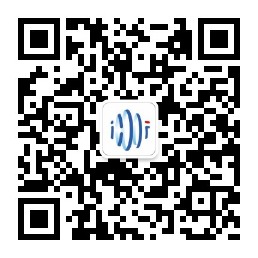在国际学术会议中,一段精准有力的英文自我介绍是学者建立专业形象、触发合作机遇的关键环节。本文基于2025年最新学术交流趋势,系统梳理自我介绍的核心逻辑、分学科模板及表达优化技巧,助您在3分钟内实现学术影响力的高效输出。

一、学术自我介绍的核心要素与逻辑架构
1. 身份定位模块
- 基础信息:采用“姓名+机构+职称”三元式锚定身份,例如:
"I am Dr. Li Wei from Tsinghua University's Institute of Climate Change, specializing in carbon sequestration technologies." - 机构价值关联:高影响力实验室或国际合作项目需优先凸显,例如:
"As a principal investigator at the MIT-Tsinghua Joint Lab on Energy Systems..."
2. 研究价值陈述
- 问题导向表达:用“挑战-突破”框架替代平铺直叙,例如:
"My research tackles the critical bottleneck of battery lifespan in EVs, where we've developed a novel electrolyte formulation extending cycle life by 40%." - 数据量化支撑:关键成果需精确到数值与载体,例如:
"This breakthrough was published in Nature Energy (IF=32.5) and has been cited by 15 industrial patents."
3. 参会目标链接
- 学术网络拓展:明确表达合作诉求,例如:
"I'm eager to connect with researchers working on solid-state battery interfaces to explore collaborative funding opportunities." - 技术转化意向:产学研结合场景可补充:
"Our team is seeking industrial partners for pilot-scale testing of this technology."
二、分场景实战模板与表达优化
1. 基础研究学者模板
适用场景:理论突破型报告、学科前沿研讨会
结构示例:
- Opening:"Good morning, I'm Prof. Zhang from CAS Institute of Geology. My work deciphers the genetic mechanisms of rare earth element enrichment."
- Research Highlight:"By integrating machine learning with geochemical modeling, we've identified 3 new mineralization markers, as detailed in our recent PNAS paper."
- Engagement Call:"I welcome discussions on applying this methodology to other critical metal systems."
2. 应用技术开发者模板
适用场景:工程实践论坛、产业技术峰会
结构示例:
- Positioning:"As CTO of GreenTech Solutions, I lead the commercialization of AI-powered geothermal exploration systems."
- Value Proposition:"Our platform reduces drilling site selection errors by 65%, deployed in 12 countries through partnerships with Schlumberger and Sinopec."
- Action Trigger:"Let's explore how your regional data can enhance our global prediction models."
3. 跨学科研究者模板
适用场景:交叉学科研讨会、政策咨询会议
结构示例:
- Interdisciplinary Bridge:"Trained as a biochemist now working at the Harvard Law-Engineering Nexus, I study the governance challenges of CRISPR-based carbon removal."
- Impact Narrative:"Our policy framework, adopted by the EU's Green Deal Advisory Board, balances innovation incentives with biocontainment protocols."
- Collaborative Vision:"I'm convening a task force on global governance standards – your expertise in IP law would be invaluable."
三、语言优化与互动增强策略
1. 学术英语精准化
- 动词升级:用“elucidate”替代“study”、“pioneer”替代“develop”
- 术语平衡:每2个专业词汇后插入通俗解释,例如:
"We employ DFT (density functional theory) simulations – a quantum mechanical modeling method – to..."
2. 非语言沟通技巧
- 视觉辅助:手持微型电子屏展示论文二维码或数据可视化摘要
- 空间运用:走向听众席进行片段式陈述(如“This graph shows...”时指向投影)
3. 问答预判与引导
- 预设问题库:准备3组延伸问题并自然植入介绍中,例如:
"You might wonder how this compares to solar-based solutions – let's discuss during the break." - 数字名片整合:结尾补充:
"Scan the QR code on your seat for our latest preprints and a 1-minute project video."
四、常见误区与风险规避
1. 内容过载陷阱
- 时间控制:严格遵循“30%身份+50%研究+20%目标”的黄金比例
- 信息筛选:每篇论文仅提1个核心发现,避免成果堆砌
2. 文化敏感性风险
- 称谓调整:欧美会议慎用“Prof.”头衔(除非已获终身教职),改用“Dr.”更稳妥
- 幽默慎用:技术类会议避免非专业玩笑,政策类会议可适当引用国际共识文件
结语
学术会议的英文自我介绍本质是一场微型TED演讲,需兼顾科学严谨性与传播感染力。建议学者建立“模块化内容库”,根据不同会议主题动态组合要素,并录制视频进行声调、语速的AI分析优化。定期参加如AAAS公众演讲工作坊等培训,将自我介绍转化为学术影响力的战略杠杆。
在国际学术会议中,一段精准有力的英文自我介绍是学者建立专业形象、触发合作机遇的关键环节。本文基于2025年最新学术交流趋势,系统梳理自我介绍的核心逻辑、分学科模板及表达优化技巧,助您在3分钟内实现学术影响力的高效输出。

一、学术自我介绍的核心要素与逻辑架构
1. 身份定位模块
- 基础信息:采用“姓名+机构+职称”三元式锚定身份,例如:
"I am Dr. Li Wei from Tsinghua University's Institute of Climate Change, specializing in carbon sequestration technologies." - 机构价值关联:高影响力实验室或国际合作项目需优先凸显,例如:
"As a principal investigator at the MIT-Tsinghua Joint Lab on Energy Systems..."
2. 研究价值陈述
- 问题导向表达:用“挑战-突破”框架替代平铺直叙,例如:
"My research tackles the critical bottleneck of battery lifespan in EVs, where we've developed a novel electrolyte formulation extending cycle life by 40%." - 数据量化支撑:关键成果需精确到数值与载体,例如:
"This breakthrough was published in Nature Energy (IF=32.5) and has been cited by 15 industrial patents."
3. 参会目标链接
- 学术网络拓展:明确表达合作诉求,例如:
"I'm eager to connect with researchers working on solid-state battery interfaces to explore collaborative funding opportunities." - 技术转化意向:产学研结合场景可补充:
"Our team is seeking industrial partners for pilot-scale testing of this technology."
二、分场景实战模板与表达优化
1. 基础研究学者模板
适用场景:理论突破型报告、学科前沿研讨会
结构示例:
- Opening:"Good morning, I'm Prof. Zhang from CAS Institute of Geology. My work deciphers the genetic mechanisms of rare earth element enrichment."
- Research Highlight:"By integrating machine learning with geochemical modeling, we've identified 3 new mineralization markers, as detailed in our recent PNAS paper."
- Engagement Call:"I welcome discussions on applying this methodology to other critical metal systems."
2. 应用技术开发者模板
适用场景:工程实践论坛、产业技术峰会
结构示例:
- Positioning:"As CTO of GreenTech Solutions, I lead the commercialization of AI-powered geothermal exploration systems."
- Value Proposition:"Our platform reduces drilling site selection errors by 65%, deployed in 12 countries through partnerships with Schlumberger and Sinopec."
- Action Trigger:"Let's explore how your regional data can enhance our global prediction models."
3. 跨学科研究者模板
适用场景:交叉学科研讨会、政策咨询会议
结构示例:
- Interdisciplinary Bridge:"Trained as a biochemist now working at the Harvard Law-Engineering Nexus, I study the governance challenges of CRISPR-based carbon removal."
- Impact Narrative:"Our policy framework, adopted by the EU's Green Deal Advisory Board, balances innovation incentives with biocontainment protocols."
- Collaborative Vision:"I'm convening a task force on global governance standards – your expertise in IP law would be invaluable."
三、语言优化与互动增强策略
1. 学术英语精准化
- 动词升级:用“elucidate”替代“study”、“pioneer”替代“develop”
- 术语平衡:每2个专业词汇后插入通俗解释,例如:
"We employ DFT (density functional theory) simulations – a quantum mechanical modeling method – to..."
2. 非语言沟通技巧
- 视觉辅助:手持微型电子屏展示论文二维码或数据可视化摘要
- 空间运用:走向听众席进行片段式陈述(如“This graph shows...”时指向投影)
3. 问答预判与引导
- 预设问题库:准备3组延伸问题并自然植入介绍中,例如:
"You might wonder how this compares to solar-based solutions – let's discuss during the break." - 数字名片整合:结尾补充:
"Scan the QR code on your seat for our latest preprints and a 1-minute project video."
四、常见误区与风险规避
1. 内容过载陷阱
- 时间控制:严格遵循“30%身份+50%研究+20%目标”的黄金比例
- 信息筛选:每篇论文仅提1个核心发现,避免成果堆砌
2. 文化敏感性风险
- 称谓调整:欧美会议慎用“Prof.”头衔(除非已获终身教职),改用“Dr.”更稳妥
- 幽默慎用:技术类会议避免非专业玩笑,政策类会议可适当引用国际共识文件
结语
学术会议的英文自我介绍本质是一场微型TED演讲,需兼顾科学严谨性与传播感染力。建议学者建立“模块化内容库”,根据不同会议主题动态组合要素,并录制视频进行声调、语速的AI分析优化。定期参加如AAAS公众演讲工作坊等培训,将自我介绍转化为学术影响力的战略杠杆。



